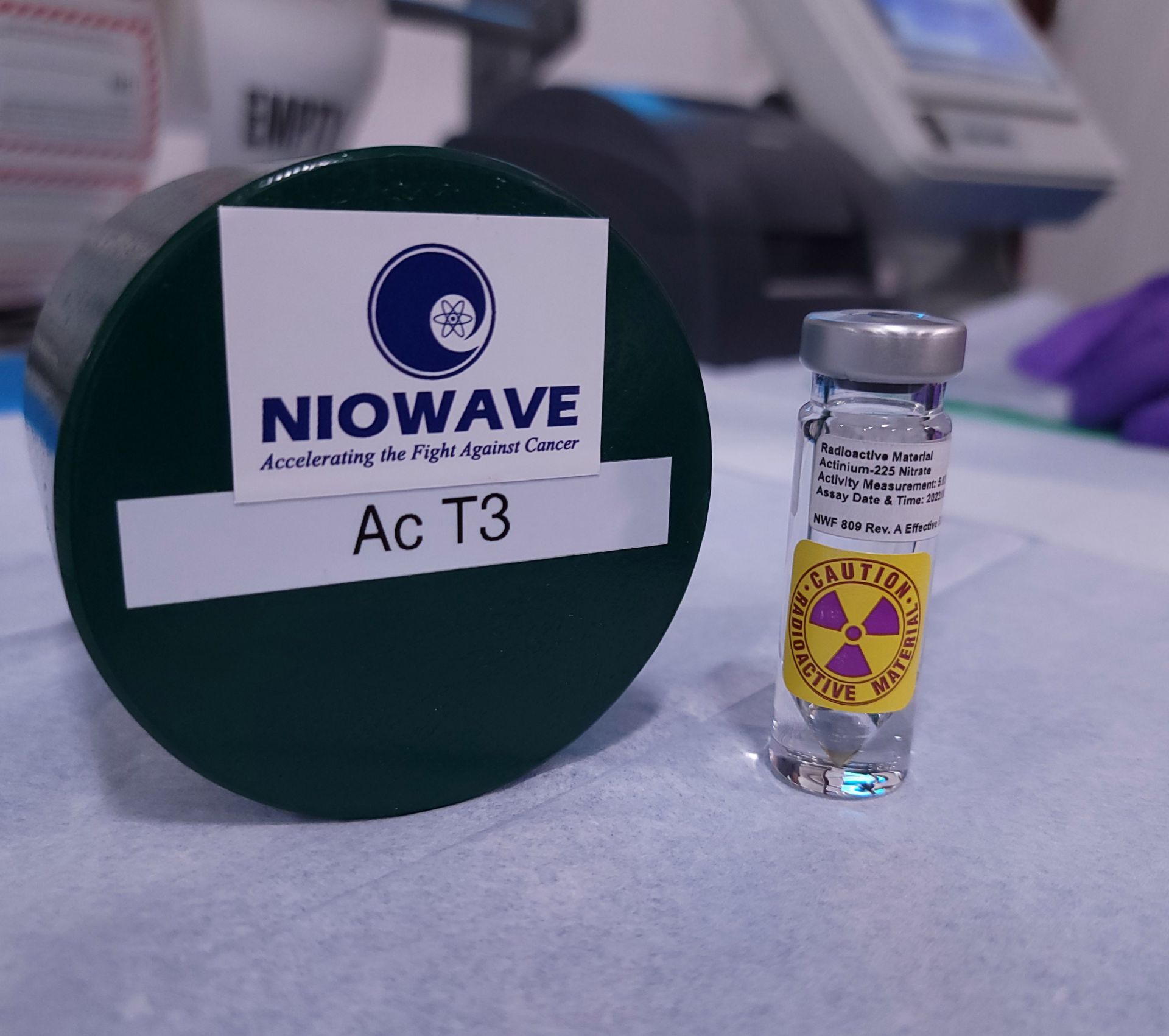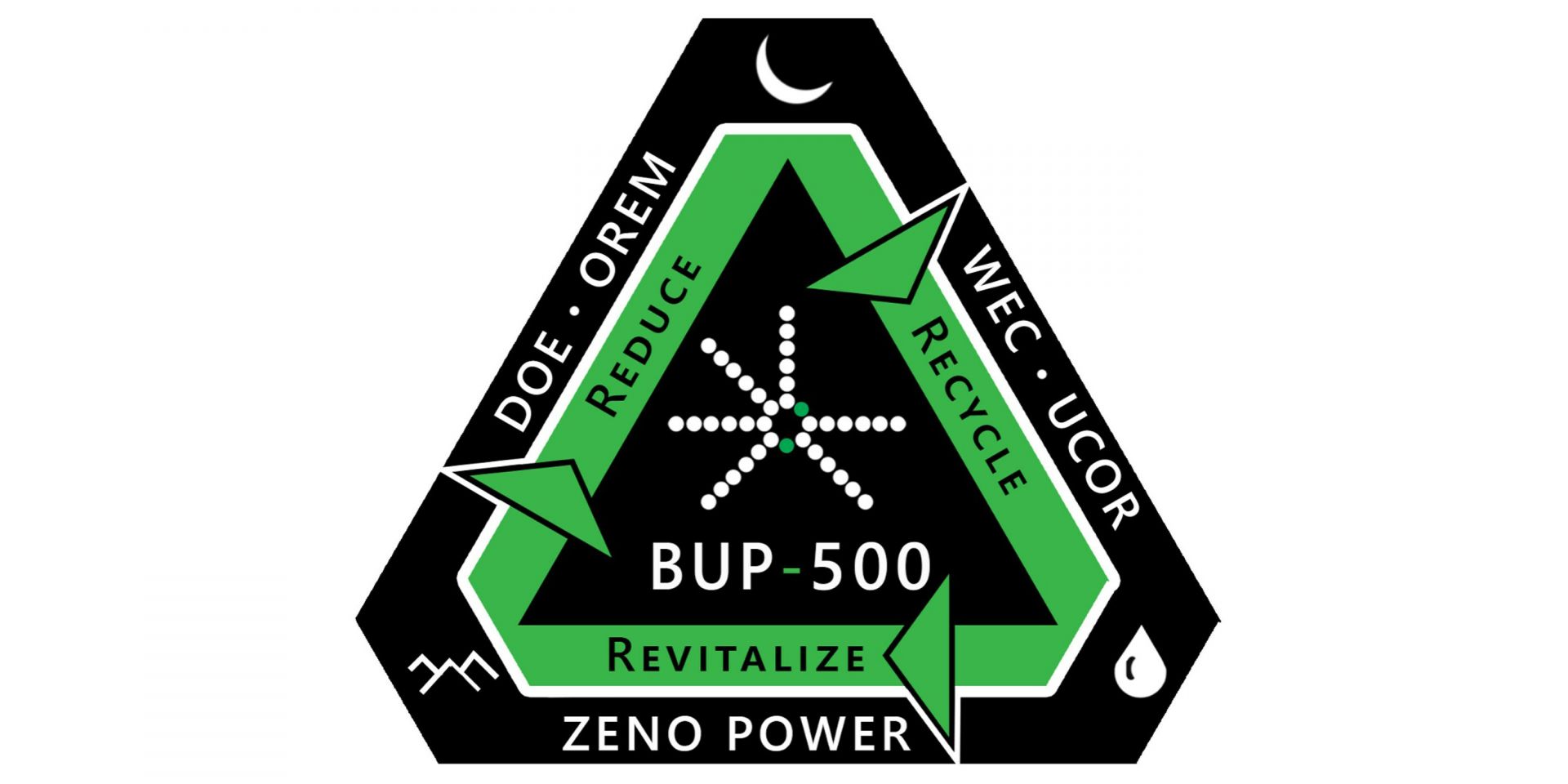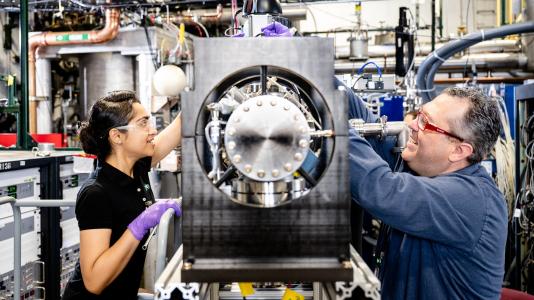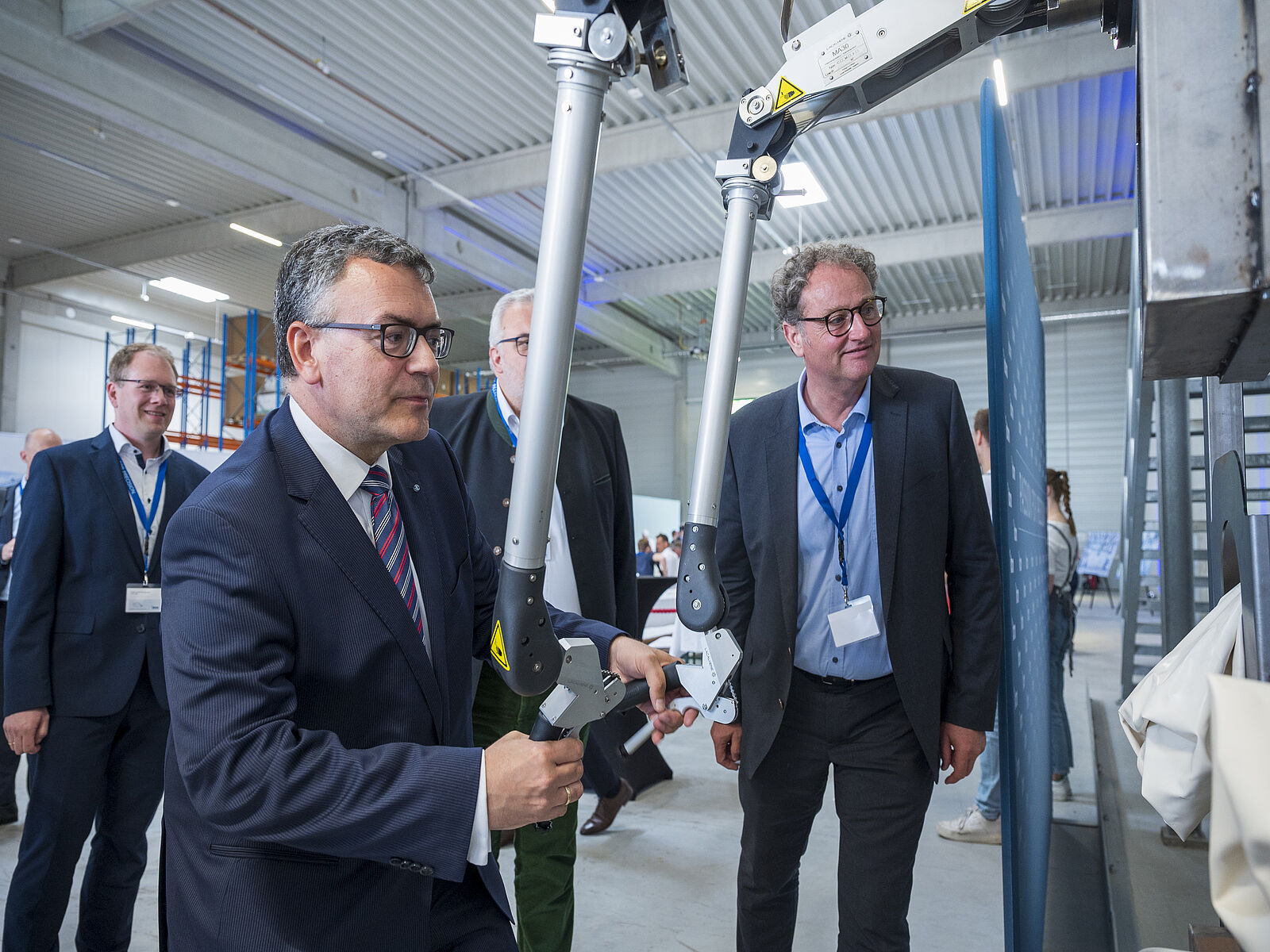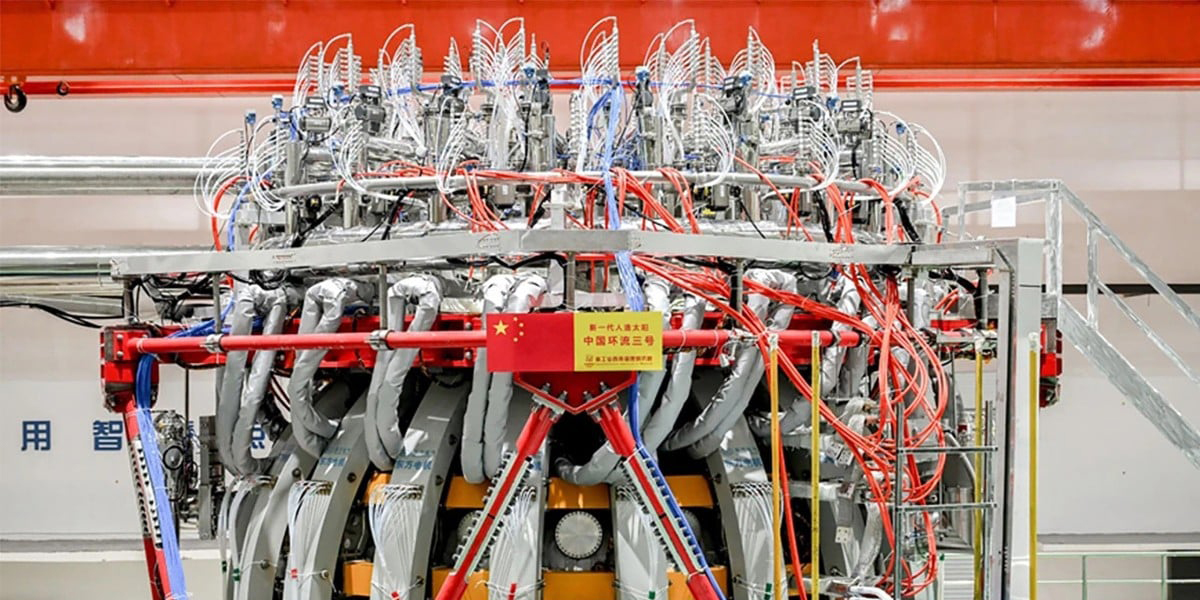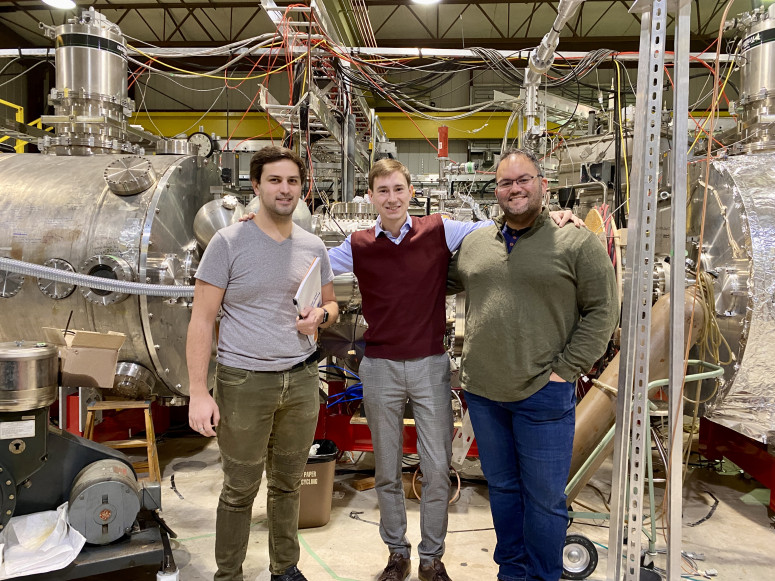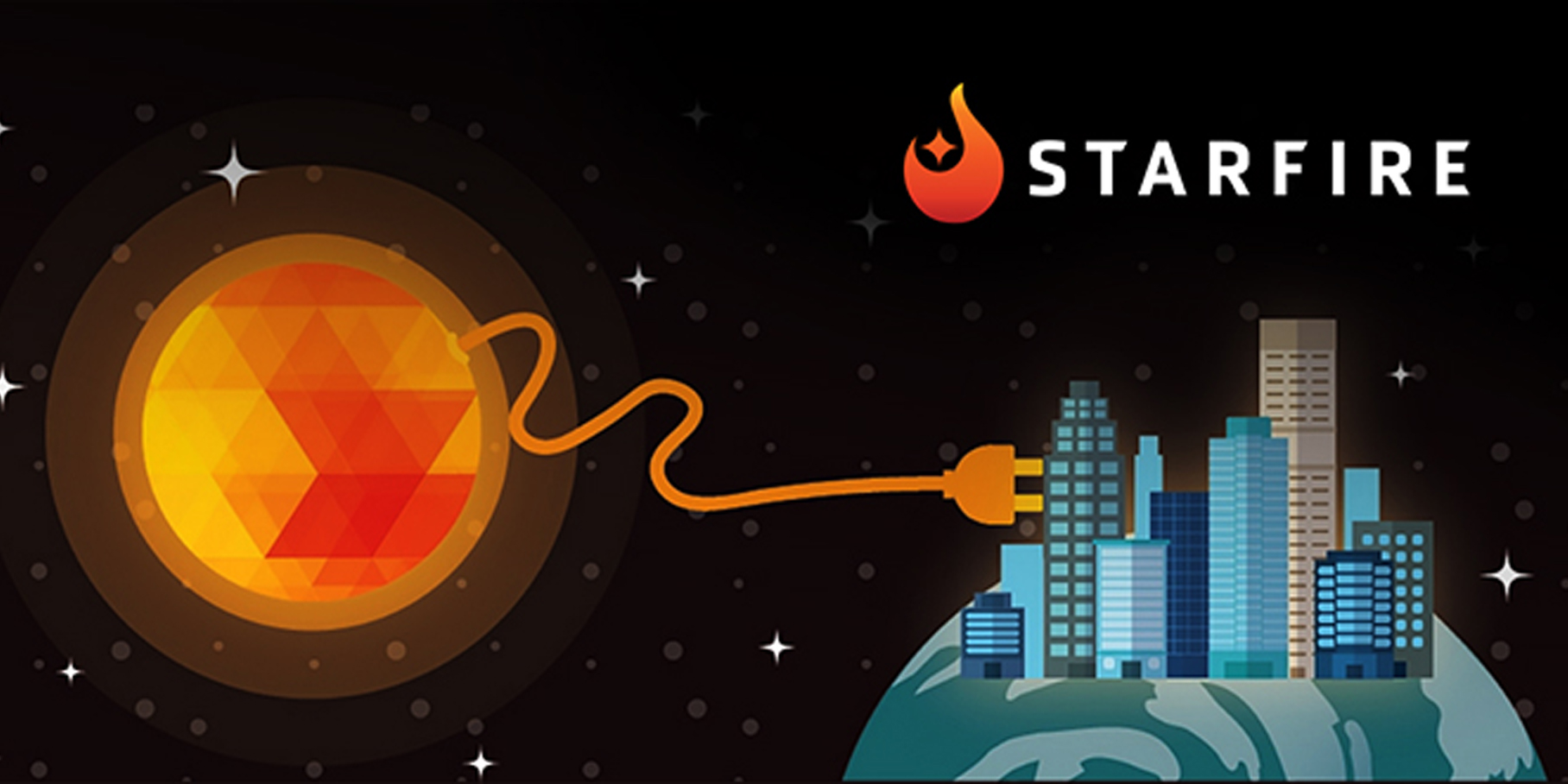Concept art of the MARVEL microreactor (Image: INL)
The Department of Energy announced February 7 that fuel for the MARVEL microreactor, which Idaho National Laboratory plans to host inside the Transient Reactor Test (TREAT) facility, is now being fabricated by TRIGA International, with the first fuel delivery expected in spring 2025. MARVEL operation was expected “by the end of 2024” as recently as May 2023, but that timeline had shifted by October, when the DOE said MARVEL “is expected to be completed in early 2025.” Now, according to the DOE’s latest announcement, “Fuel loading for MARVEL is anticipated to occur in 2026, with the microreactor expected to be on line by 2027.”
A vial of Ac-225 produced by Niowave stands next to its lead shipping pig. (Photo: Niowave)
According to the Council on Radionuclides and Radiopharmaceuticals, more than 82,000 nuclear imaging procedures using nuclear medicine are performed throughout the world every day. To administer these vital medical procedures, radiopharmaceutical companies and hospitals rely on a handful of producers of medical radioisotopes.
[Click image for full view.] More than 20 African countries have no radiotherapy treatment facilities. Darker blue areas indicate regions of greater population density, while radiotherapy centers are marked with red dots. (Image: IAEA)
More people in low- and middle-income countries who have head and neck cancer may be able to access lifesaving radiotherapy after research supported by the International Atomic Energy Agency has shown that fewer—but higher—doses of radiation treatment resulted in clinical outcomes similar to standard radiotherapy treatments. Reducing overall treatment times for this type of cancer through a treatment regimen called hypofractionation could help countries navigate resource constraints and shorten waitlists, enabling more patients to receive treatment while also reducing the cost and duration of care. The IAEA announced the findings in a news article published January 22.
Argonne scientists adjust the AMIS beamline prior to its commissioning. (Photo: Argonne)
Argonne’s newest beamline uses heavy ions to degrade a material’s properties as much in a day as a nuclear reactor does in a year, without introducing radioactivity. That’s according to an article published January 16 by Argonne National Laboratory. The Argonne Tandem Linac Accelerator System (ATLAS) now boasts a new beamline—the ATLAS Material Irradiation Station, or AMIS—that uses the accelerator’s lowest high-energy beams to displace atoms and mimic the degradation of materials inside an operating reactor over time. AMIS makes it easier and faster to test candidate fuel and structural materials for existing and future reactors.
An IAEA researcher collects samples from the Antarctic shoreline. (Image: IAEA)
The International Atomic Energy Agency, in cooperation with Argentina, launched a scientific research expedition on January 6 to study microplastics in Antarctica—one of the planet’s most remote areas—as part of an effort to combat widespread microplastic pollution.
Bavarian minister of state Florian Herrmann (left) with ITM CEO Steffen Schuster (right) and others at a mock-up Lu-177 hot cell. (Photo: ITM)
Radiopharmaceutical biotech company ITM Isotope Technologies Munich announced it has received regulatory approval to begin production of the medical radioisotope lutetium-177 at the company’s NOVA facility in Neufahrn, near Munich, Germany.
The HL-2M tokamak reactor, developed by the CNNC’s Southwestern Institute of Physics. (Photo: CNNC)
The government of China has formed a new national industrial consortium focused on the development and advancement of nuclear fusion technology, news outlets have reported.
From left, engineer Jeremiah Kirch, postdoctoral researcher Mykola Ialovega, and assistant scientist Marcos Xavier Navarro-Gonzalez pose in front of the WHAM device at UW-Madison. (Photo: Mykola Ialovega)
A new type of cold spray coating, made from the metal tantalum and applied to the plasma-facing steel walls of fusion reactors, could lead to efficient, compact fusion reactors that are easy to repair and maintain, according to a study recently published in the journal Physica Scripta. The study was led by scientists and engineers at the University of Wisconsin–Madison and involved researchers from South Korea, France, and Germany.
LLNL physicist Mary Burkey developed a novel approach to simulating the energy deposition from a nuclear device on an asteroid’s surface. (Photo: LLNL)
The same high energy density that makes nuclear energy a clean and efficient source of power could make it a good alternative to defend the planet against catastrophic asteroid impacts. NASA demonstrated the world’s first planetary defense technology in September 2022 by deliberately crashing a “kinetic impactor”—a heavy, box-like spacecraft—into an asteroid. Now, researchers at Lawrence Livermore National Laboratory have developed a new tool to model how a nuclear device could deflect—or even destroy—an asteroid threat to Earth in a more efficient and controlled way.
A slide from the DOE-FES’s recent presentation to the Fusion Energy Sciences Advisory Committee. (Image: DOE)
The Office of Fusion Energy Sciences (FES) in the Department of Energy’s Office of Science introduced a new plan—"Building Bridges: A Vision for the Office of Fusion Energy Sciences”—during a Fusion Energy Sciences Advisory Committee (FESAC) hearing on December 13, and announced that news December 14. What’s included? A plan for the DOE to “establish the steps needed to help advance fusion energy, including addressing key science and technology gaps in the supply chain and industry.” The vision is less a guiding document than a preview of DOE-FES’s near-term intentions, which include drafting a fusion science and technology road map in 2024 to shape investments for the coming decade.
December 15, 2023, 4:56PMNuclear NewsDonna Kemp Spangler and Joel Hiller BWXT’s microreactor components would be designed to be transported directly from the factory to the deployment site. (Image: BWXT)
“The tools of the academic designer are a piece of paper and a pencil with an eraser. If a mistake is made, it can always be erased and changed. If the practical-reactor designer errs, he wears the mistake around his neck; it cannot be erased. Everyone sees it.”
Many in the nuclear community are familiar with this sentiment from Admiral Rickover. A generation of stagnation in the industry has underscored the truth of his words. But as economies around the world put a price on carbon emissions, there’s a renewed sense of urgency to deploy clean energy technologies. This shifts the global balance of economic competitiveness, and it’s clear that the best path forward for nuclear requires combining the agility of private innovators with the technology and capabilities of national laboratories.
STARFIRE is the name of an inertial fusion energy hub led by Lawrence Livermore National Laboratory—one of three hubs announced in early December. (Image: LLNL)
The Department of Energy recently announced that it was establishing three inertial fusion energy (IFE) hubs and funding them with a total of $42 million over four years. The leaders of the three hubs selected by competitive peer review—Colorado State University, Lawrence Livermore National Laboratory, and the University of Rochester—all issued press releases touting the attributes and plans of their facilities and their research collaborators on the same day—December 7.



